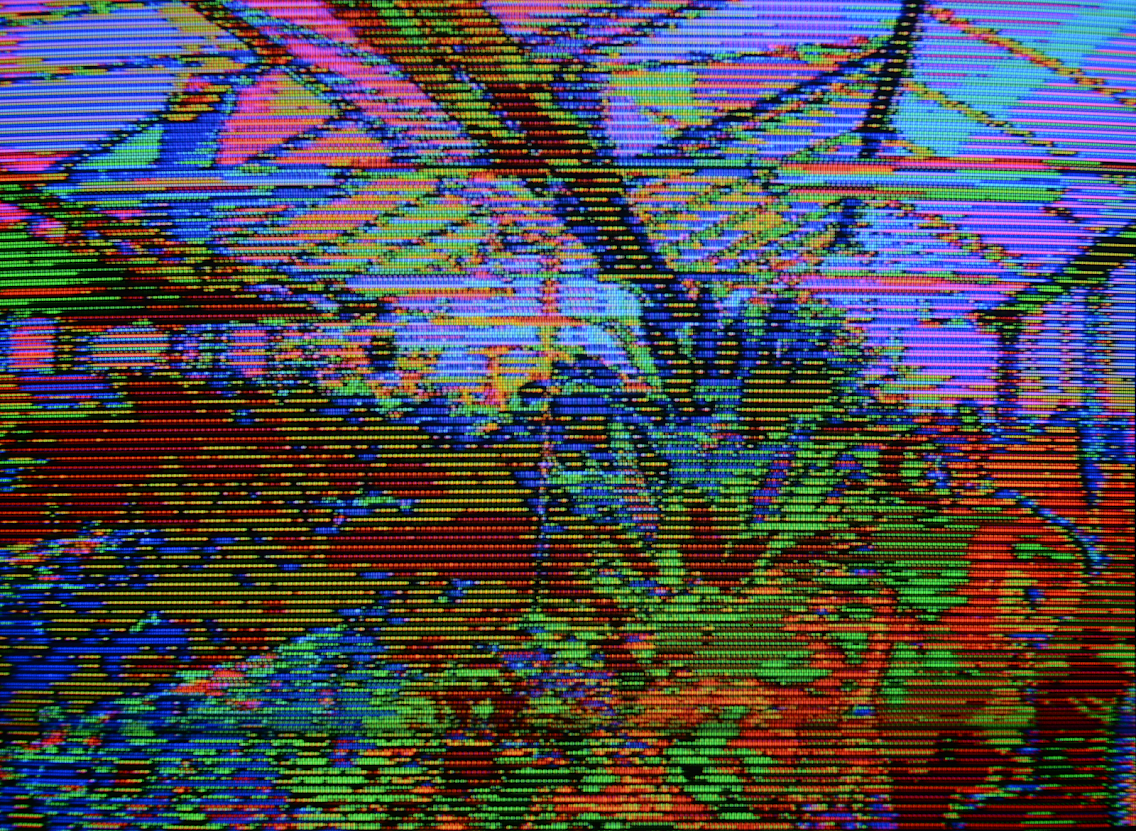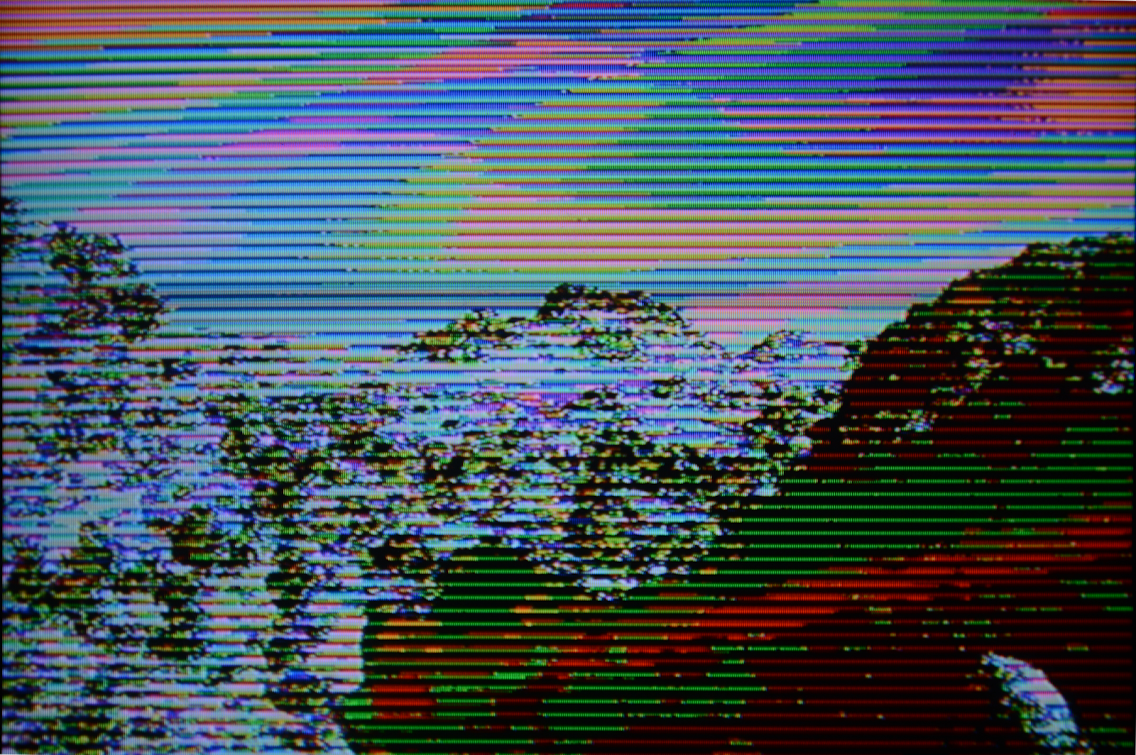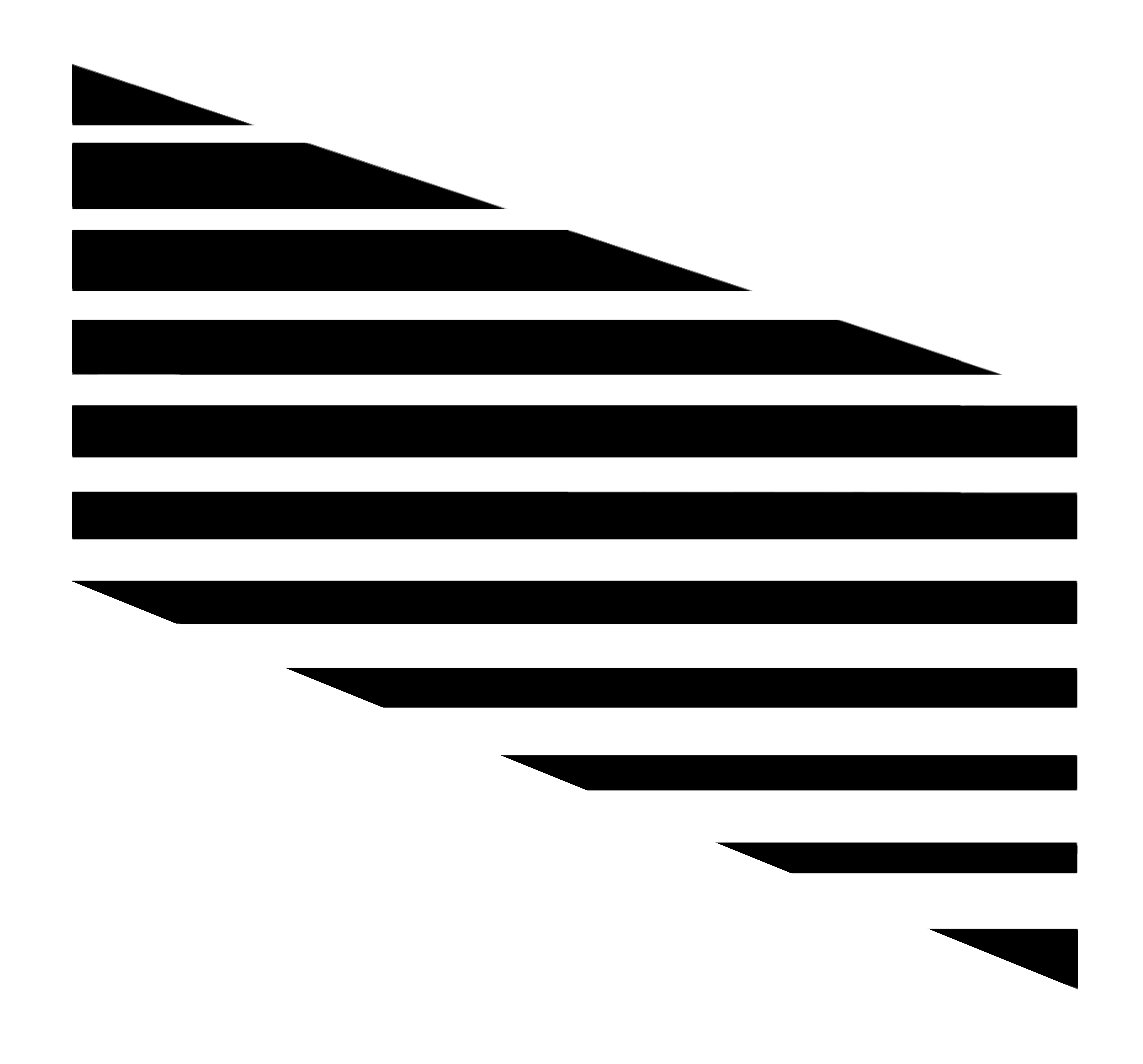FFG
FFG stands for Falsch Farben Generator, literally, fake color generator, the original name of the circuit when it was published in german magazine Funkschau in 1987, realised by M. Klose and H. Neumayr.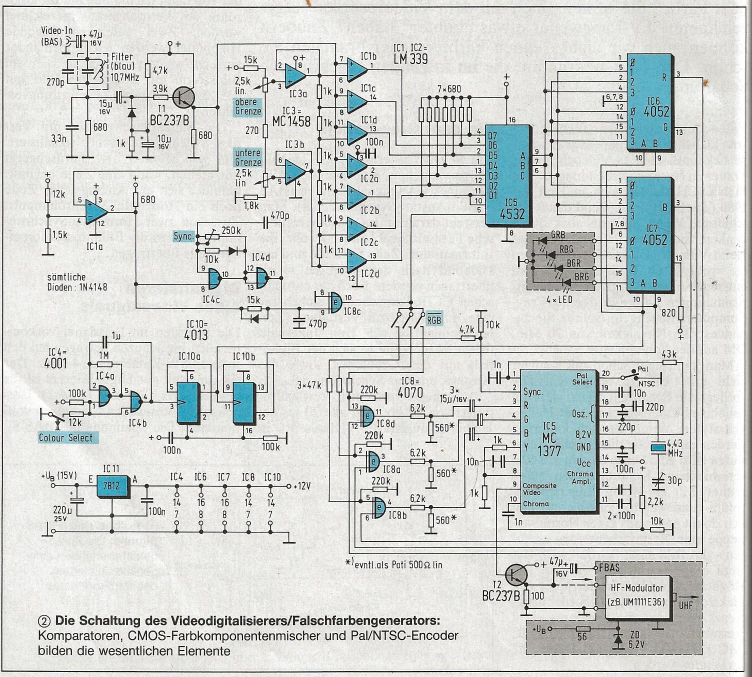
The project have been resurrected recently as “Visualist” by Berto A and the documentation have been translated and publish on Makezine. The original doc (in german and in italian), Berto A documentation and gerber files for the original board are available here.
The FFG is based on the original circuit and adds some modifications, mainly video rates CV control over each parameter (R, G and B level and comparators threshold) and NTSC/PAL compatibility.
The project will be soon available as a built unit, DIY kits and circuit boards.
DOCUMENTATION
– Build Guide
– User Guide
– Mainboard BOM / Controlboard BOM
– Block Diagram
Instagram posts featuring #falschfarbengenerator Rampes is now available! Demo video is up on YouTube (link in bio) Apr 8 (This is an extract of the last newsletter, part 3/3) Mar 7 (This is an extract of the last newsletter, part 2/3) Mar 7 Okay, so this is how synced modulation looks like on FFG last revision. Jul 12 (This is an extract of the last newsletter, part 1/3) Mar 7 FFG and TRQ goes along quite well, FFG is generating the colors, with unsynced modulation, giving the diagonal color fading. TRQ shifts the colors, as long as adding a kind of “scan line” effect and some glitch too. #glitch #glitchart #glitchartistscollective #analogvideo #videoart #diy #vdiy #thispersondoesnotexist Nov 19 Pre-orders for CBV001 modules and standalone units are now open! Jan 16 Source colorised using FFG. Lines, dots and color shifts are from TRQ. Feb 26 (This in an extract of the last newsletter, part 2/2) Jan 11 Preorders for built FFG have shipped, remaining units are available through the webshop along with DIY kits. Mar 13 (This in an extract of the last newsletter, part 1/2) Jan 11 FFG update: Dec 2 Happy to announce that preorder for FFG (aka #falschfarbengenerator) are open, available as a built unit or a DIY kit (pcbs alone will follow). First units/kit are expected to ship beginning of December. (Link to the project in bio) Nov 1
Rampes (pronounced /ʁɑ̃p/, french for ramps) is a video ramp generator and sync extractor, supporting the following formats
288p50/240p59.94/576i50/480i59.94/576p50/480p59.94/720p50/720p59.94/720p60
1080i50/1080i59.94/1080i60/1080p23.98/1080p24/1080p25/1080p29.97/1080p30
The format is detected and selected automatically.
In video, a ramp is a signal which produces a gradient that goes from minimum to maximum during the line interval (horizontal ramp) or the frame interval (vertical ramp). By mirroring and further processing them, it is possible to generate 2D shapes. Rampes also features horizontal, vertical and Odd/Even sync outputs, which allows to sync other video modules, as well as audio modules.
On its left side, Rampes features (top to bottom):
- Horizontal and vertical ramps with their inversions
- Mirrored horizontal and vertical ramps and their inversions
On its right side, Rampes features (top to bottom):
- Horizontal, vertical and Odd/Even sync
- Diamond, Rectangle, Cross, Star and Ellipse shapes
Rampes requires a sync signal over RCA to operate, coming either from a sync generator module, or an external video signal (Composite or Y from Component).
The module is powered through standard Eurorack connector or DC barrel.
Inputs:
RCA Sync input (rear), 75ohm
Outputs:
RCA Sync output (rear), 75ohm
0-1V Ramp and shapes outputs, 75ohm
0-5V Sync outputs, 75ohm
Specs:
- 8HP
- 200mA +12V
- 0mA -12V
- 0mA +5V
- 45mm deep
#eurorack #videosynthesis #analogvideo #syntonierampes #syntonie
Stable update
The second revision of Stable has been built and tested, improving the noise level greatly by the use of active attenuverters, better power decoupling and moving the design on two boards instead of one, in order to help with the board layout.
Active attenuverter also allows for a better nulling of the CV modulation when the attenuverter is centered, particularly useful since the Contrast, Brightness, Hue and Saturation CV inputs are normaled together.
Hard to give an ETA yet, as there is still some things to fix, asking to revise both boards, then the firmware is mostly done, recently added support for all HD formats supported by VU007B, meaning Stable can be used as a Luma processor (no hue or saturation control, unfortunately) and stabilizer with HD Component.
Though, hope to have it ready during the summer. Wait and see I guess?
Video showing what Stable can achieve on it’s own, without any other modules involved. Messing with the contrast, brightness, hue and saturation parameters until 0:25, then using the pre-processor jack output (unprocessed video input) into the CV inputs until 0:44, and the last part is using post-processor output as modulation, creating some nice feedback effects typical of Composite video glitch.
Recorded with BM Analog to SDI + Video Assist in Composite PAL/576i50.
#videoart #glitchart #analogglitch #analogvideo #eurorack #syntonie
Cadrans update
Now that the work on Rampes is done, time to work on the next revision of Cadrans. Been modifying the current revision for the past week or so, fine tuned a couple things, will be spending a few more days on it to exhaust what I can do with the current revision of the boards.
Once done, schematic and board files will be revised, and finger crossed, those will be the production revisions!
Video demonstrating the crossfading feature of Cadrans, one RGB feed is made with Rampes shapes into Seuils input and CV input, the other feed is a stock video decoded with Entrée and processed through Isohélie for posterization. Both are faded using Cadrans, using one of Seuils logic outputs as a CV first, giving a keying related to the shapes, and then using Y output from Entrée into LZX Keychain to generate a key based on the external video.
Recorded with BM Analog to SDI + Video Assist in Component 720p60.
#videoart #videosynthesis #analogvideo #eurorack #syntonie
Quite happy with it so far, need some more tweaking on the CV inputs, so they’re 1V compatible to match levels coming from an LZX system. Each inputs have an attenuator, so standard 5V signals can be tamed a bit. *Two LZX Castle VCO modulating low and high threshold of FFG comparators, FM on the oscillator synced to hsync.* #videoart #analogvideo #ffg #falschfarbengenerator #lzxcastle #diy #syntonie #thispersondoesnotexist
1) Full restock = 15% off everything
Syntonie being a one man army, and with an ever growing product catalog, it’s not always easy to keep everything in stock, so this is a rare enough occurence worth celebrating!
To do so, everything listed on the website is on sale with 15% off, starting today, March 7th, until March 22nd 23:59 GMT+1.
So if something you wanted was out of stock, now is the time!
Video is made with Entrée displaying the key mask with the logo and text, Rampes generates the shapes processed through Solaire, and a slow modulation from Animate is going to Solaire as well. Taking Solaire outputs into Cadrans inputs, with the key mask as CV on all three Cadrans channels.
Cadrans outputs going to VU007B RGB inputs. Recorded with BM Analog to SDI + Video Assist in Component 720p60.
2) Rampes update
Happy to announce that Rampes is now ready for production! Most of the parts are in stock and the rest is on its way, so expecting to have it in stock in about a month.
Beside fixing some issues, the latest revision also modified the sync outputs to be 5V amplitude rather than 1V, which makes the interfacing with audio Eurorack modules easier, while keeping it compatible with video modules that takes front panel sync.
It has been tested with various audio modules, and it works well, may ask for some logic frequency divider, as the hsync might be a bit fast for some modules, since its ranging from 15kHz to 45kHz. Had a lot of fun using a sequencer clocked by vsync to modulate video on frame time base.
Another newsletter will be send out once Rampes is ready to ship.
Video is made by sending various outputs of Rampes into Cadrans, and rectifying the outputs of Cadrans with Solaire. Another Solaire is used to mix and rectify shapes from Rampes and a slow modulation from Animate, outputs of the second Solaire used as modulation on Cadrans.
First Solaire outputs going to VU007B RGB inputs. Recorded with BM Analog to SDI + Video Assist in Component 720p60.
#videoart #videosynthesis #analogvideo #eurorack #syntonie
#truqueur #falschfarbengenerator #syntonie
Expected shipping date: early February for modules, end of February for standalone units.
Footage processed in NTSC, stabilized using Stable and captured with BM Analog to SDI + Video Assist.
#videoart #analogglitch #analogvideo #cbv001 #stable #eurorack #syntonie
Currently putting FFG kits together and building units to fulfill preorders, some will be available through the shop in about 2 weeks.
A few built TRQ should be back in stock soon too
#falschfarbengenerator #truqueur #glitch #glitchart #glitchartistscollective #analogvideo #videoart #diy #vdiy #thispersondoesnotexist #syntonie
Work in progress
Now that the work on the updated sync generator is done, it can be used for other projects.
1) Here is one of the implementation, Stable, it is a video processor amplifier and stabilizer for glitch.
The proc amp part allows to control contrast, brightness, hue and saturation of a Composite video signal, or only contrast and brightness on a SD/HD Y signal from Component (the chroma filter can be bypassed to avoid unwanted filtering). All parameters of the proc-amp are controllable with an external voltage, which allows for nice internal feedback/glitch like effect when using the post proc output.
The processor part extract sync from the video signal, so it can be used to reinsert a clean sync in the stabilizer part. Basic usage is to input the clean video signal into the processor part, then process it using a glitch device like CBV001, glitch output going into the stabilizer. This will ensure a stable signal in all instances, making glitch easier to capture/display.
A first revision has been tested, and beside a couple fixes, it is really promising. Then, it is far from being ready for release, so no precise ETA yet.
2) Another use of the updated sync generator board is a multiformat ramp generator, Rampes.
It generates horizontal and vertical ramps, mirrored horizontal and vertical ramps, with inversion of each.
It also generates (or rather extract) horizontal, vertical and odd/even sync pulses, in order to sync modules with a front panel sync input. Those pulses are currently 1V, however making them 5V should help with audio modules compatiblity, without impacting compatibility with 1V standard modules.
Finally, it generates five 2D shapes made from combinations of mirrored ramps.
Boards for the 3rd revision are on their way, mostly fine tuning the circuit, no ETA on this one either, though I expect to have it ready before Stable.
3) If you want to know more about the upcoming stuff, or chat about video synthesis/glitch art, feel free to join the Discord server (link in bio)
#videoart #videosynthesis #analogvideo #eurorack #syntonie
Here are some close-up pictures of the circuit processed through FFG, showing what can be done with audio rate modulation only. At some frequencies, when both thresholds are modulated, it creates some color overlaping, resulting in more shades (compared to the initial 3-bit/8 colors). #falschfarbengenerator #diy #diysynth #syntonie #videoart #visualart #colorizer
New year, new resolutions
Wish you a happy new year! Thanks for the continuous support during 2023, it has been an intense year, with the release of six new modules: Isohélie, Animate, Animate EXP, Seuils, Solaire and Entrée.
1) New resolutions for 2024 are 720p59.94/1080p29.97/1080i59.94/1080p23.98/1080p24.
In other words, the updated sync generator board for VU007B is now available for purchase to upgrade your unit, and it is now included with assembled modules, DIY kits and PCB sets (note that there is only a couple DIY kits in stock still, and those won’t be restocked). Here is a quick summary of the features :
– Additional formats supported: 720p59.94 / 1080i59.94 / 1080p29.97 / 1080p23.98 / 1080p24
– Genlock to an external video signal improved: faster lock time and reduced jitter
– Format autodetection feature: detects the format of the external video signal when present and set itself to the right format, overriding the front panel switches.
2) If you fancy upgrading your modules a bit more, VU007B aluminum front panels and VU003B aluminum front panels are now available to order separately.
3) CBV001 is now available as a SMD PCB set, this will make the build and part sourcing easier, as well as helping in keeping the same stock of PCB for assembled units and DIY option.
4) Price drop on all right angle RCA cables
#videoart #videosynthesis #analogvideo #eurorack #syntonie
First units have been built and tested, DIY kits are complete, now waiting for the enclosures to be delivered, so the first preorders should ship next week. I may have extra units/kits from this batch that I’ll put on my website, else next batch will be in January. Thanks for supporting the project 🙏
#falschfarbengenerator #syntonie #diy #videoart #analogvideo #videoprocessing
FFG is a video colorizer based on a circuit from 1987, published in the German magazine Funkschau, project recently unearthed by Berto A under the name « Visualist ». (Original documentation and (yet untested) gerbers of the original board are available on github). FFG addresses a few issues from the original circuit while also enabling external modulation of each parameters, meaning it can be controlled using external signals such as audio or CV from a modular synth, from slow LFO/enveloppe up to video rate oscillator.
Another improvement over the original design is PAL/NTSC compatibility, using an internal switch to set the standard.
The device works by affecting colors (Red, Green, Blue, Magenta, Yellow, Cyan, Black and White) depending on the brightness level of the input signal. This affectation can be modified using the bitswap and invert switches, giving up to 32 color arrangement.
Shout out to Iker for the enclosure design, @loobabalooba for the enclosure graphics, Berto A for resurrecting the project and providing English documentation, @videocircuits for documenting his Visualist build, M. Klose and H. Neumayr for designing the original circuit, and of course to everyone who supported me during the development of the project 🙏 🙏 🙏
#videoart #analogvideo #analogcolorizer #videoprocessing #videosynthesis #diy #syntonie #falschfarbengenerator
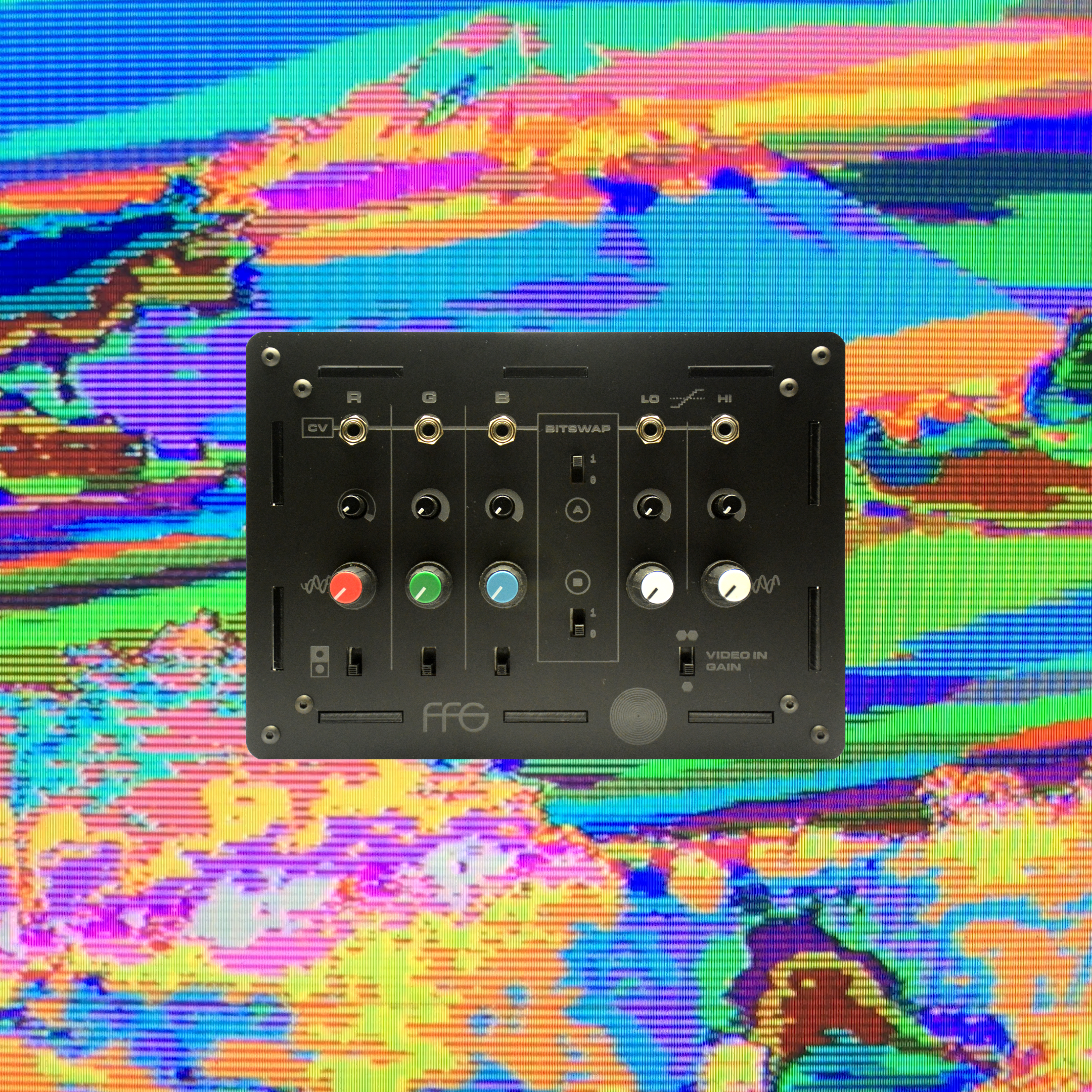
Turn on subtitles for the demo videos.
